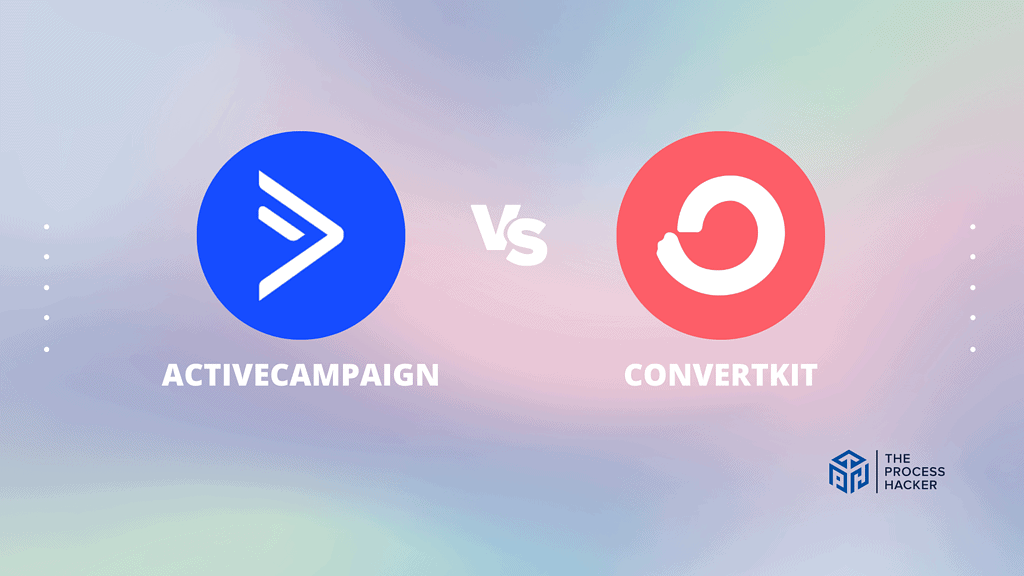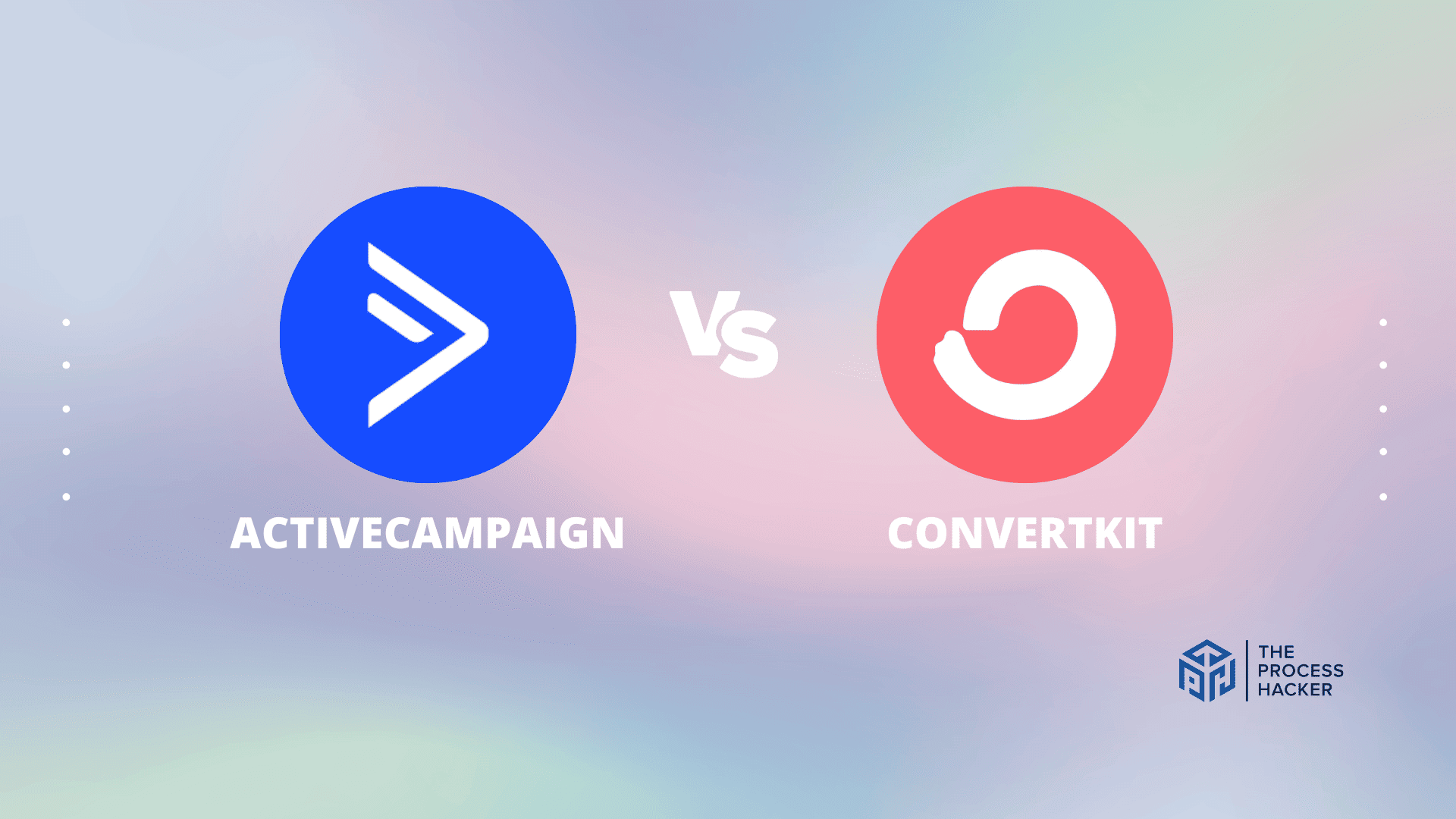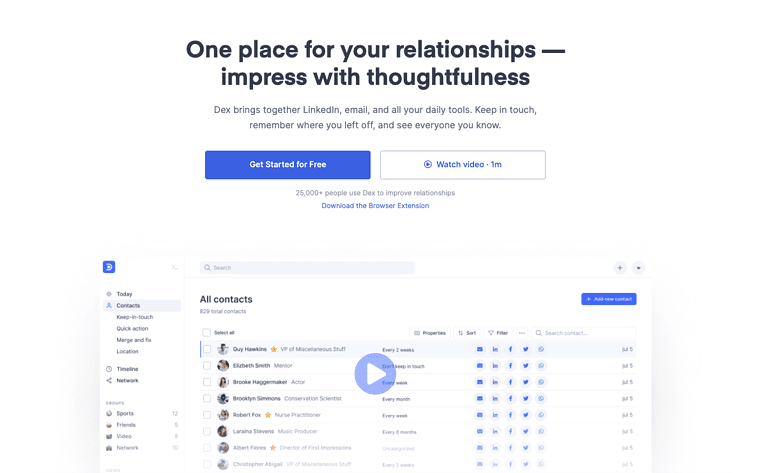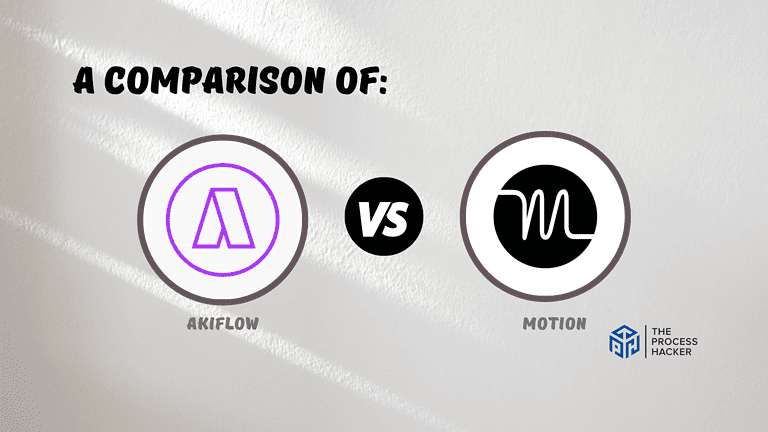ActiveCampaign vs ConvertKit: Which Email Marketing Automation Tool is Better?
Are you a busy entrepreneur looking to take your email marketing game to the next level?
Or perhaps a small business owner seeking an efficient and effective way to reach out to your customers?
Look no further because this blog post is for you! Today, we will compare two popular email marketing services: ActiveCampaign and ConvertKit!
If you purchase through our partner links, we get paid for the referral at no additional cost to you! For more information, visit my disclosure page.
With both boasting impressive features and claims, it can be overwhelming trying to decide which one is best suited for your business automation needs. But fear not, as we explore their similarities, differences, pros, and cons in this comprehensive review.
So grab your caffeine and get ready to discover which email marketing automation tool comes out on top in the battle of ActiveCampaign vs ConvertKit!
Brief Overview: ConvertKit vs ActiveCampaign
First, I’ll give you a quick overview of ActiveCampaign and ConvertKit:
ActiveCampaign
ActiveCampaign is a robust email marketing tool specializing in marketing and branding automation. It empowers businesses to create highly personalized customer experiences across email, SMS, messaging apps, and more.
Key Selling Points:
- Advanced email marketing automation features with a visual workflow builder
- Integrated CRM to manage leads and customers
- Detailed site tracking and analytics
- A/B testing for emails and automation sequences
- Comprehensive third-party integrations
ConvertKit
ConvertKit is an email marketing software tool designed for creators and small businesses, emphasizing simplicity and ease of use. It offers email marketing, business automation tools, and the ability to create unlimited landing pages and forms, emphasizing direct engagement for less technical users.
Key Selling Points:
- User-friendly interface ideal for beginners
- Customizable landing pages and forms
- Tag-based subscriber system for precise targeting
- Automation rules to personalize subscriber experience
- Integrations with popular tools for creators
Quick Verdict: ActiveCampaign vs ConvertKit
ActiveCampaign shines in its ability to create complex, automated workflows tailored to individual business needs. Its integrated CRM system helps manage leads and customers efficiently and enables a seamless flow between marketing and sales efforts.
The platform’s detailed analytics and A/B testing capabilities provide deep insights into campaign performance, ensuring continuous optimization and growth. For businesses seeking a robust, all-in-one marketing automation tool that can scale with their growth, ActiveCampaign is the unmatched choice.
Designed with creators in mind, ConvertKit offers an intuitive platform that simplifies email marketing and automation. Its tag-based system allows for precise targeting and personalization, while the easy-to-use landing page and form builders help capture and nurture leads without technical skills.
ConvertKit’s strength lies in its ability to facilitate direct, meaningful engagement with audiences, making it ideal for bloggers, artists, and small business owners looking to build and manage their communities effectively.
Product Overview: ActiveCampaign vs ConvertKit

What is it?
ActiveCampaign is a powerful marketing automation platform. It centralizes email marketing, messaging, CRM capabilities, and robust analytics to build sophisticated customer journeys. It is also one of the best client management software available.
ConvertKit is a streamlined email marketing platform geared towards creators. It prioritizes audience building, segmentation, and easy-to-use campaign creation tools.
Who is it for?
ActiveCampaign targets businesses and enterprises that need intricate email automation, cross-channel communication, and in-depth customer relationship management.
ConvertKit caters to bloggers, podcasters, course creators, and those who sell digital products and manage personal brands who prioritize strong audience connections.
What makes it special?
ActiveCampaign’s standout feature is its advanced automation builder. It empowers businesses to create highly targeted campaigns across multiple channels, delivering a tailored experience.
ConvertKit excels in its creator-centric focus and intuitive design. Its visual automation, landing page builder, and streamlined approach make it a favorite among those who don’t require the vast complexity of other platforms.
What does it do?
ActiveCampaign provides tools, including email marketing, marketing automation, sales automation, and CRM. It enables businesses to create custom workflows, segment their audience, and analyze the effectiveness of their campaigns in depth.
ConvertKit offers email marketing, automation, and the ability to create landing pages and sign-up forms. It allows creators to easily manage their subscribers, automate communication, and customize their messaging based on subscriber behavior and preferences.
Quick Comparison: ActiveCampaign vs ConvertKit
| Key Features | ActiveCampaign | ConvertKit |
|---|---|---|
| #1) Pricing | Winner | |
| #2) Free Plan | Winner | |
| #3) Design & Functionality | Tie | Tie |
| #4) Email Marketing | Tie | Tie |
| #5) Automation | Winner | |
| #6) List Segmentation & Predictive Sending | Winner | |
| #7) Forms & Landing Pages | Winner | |
| #8) Reporting & Analytics | Winner | |
| #9) CRM | Winner | |
| #10) Integrations | Winner | |
| #11) AI Tools | Winner | |
| Overall | For Small Businesses & Companies | For Content Creators & Bloggers |
Feature Comparison: ActiveCampaign vs ConvertKit
Let’s compare the features of these email marketing automation tools so you can make the right decision for you and your business.
#1) Pricing
ActiveCampaign’s pricing model is tiered, starting at $29 per month for the Lite plan, which includes access to email marketing, subscription forms, and marketing automation.
The pricing starts at $23 per month for sales automation and CRM. They also offer Professional and Enterprise plans for larger organizations and teams, with additional features and capabilities.
ConvertKit, on the other hand, offers a more straightforward pricing structure. Their plans start at just $15 per month for up to 300 subscribers, making it an affordable option for smaller businesses or individuals beginning to grow their audience.
When comparing the two, it becomes clear that ConvertKit offers a simpler and more affordable starting point, especially for those with a smaller audience.
Verdict: ConvertKit takes the lead with its affordable entry point for pricing.
#2) Free Plan
ActiveCampaign offers a 14-day free trial for exploring their platform. This trial grants access to many marketing automation features on every customer experience automation platform.
ConvertKit features a permanent free plan for up to 1,000 email subscribers. This plan includes core email marketing tools, essential landing pages, and form creation.
ActiveCampaign’s trial is beneficial if you want to test-drive advanced features before committing to a paid plan. However, ConvertKit is generous with its permanent free plan, which is excellent for creators who are just starting and need time to grow their audience.
Verdict: For the free plan, ConvertKit edges ahead for solo creators and startups on a budget.
#3) Design & Functionality
ActiveCampaign offers many features for email design, landing pages, automation, CRM, and reporting. Its powerful options also mean the interface can feel more complex to learn. Navigating ActiveCampaign may take practice for someone brand new to marketing automation.
ConvertKit emphasizes a clean design and straightforward functionality. Their intuitive email and landing page builders allow creators to launch email campaigns quickly. Additionally, simple automation is streamlined and doesn’t require extensive technical knowledge.
ActiveCampaign is preferable for established businesses with advanced automation, data reporting, and a unified customer view. On the other hand, ConvertKit shines for creators and bloggers, valuing speedy onboarding, simple email templates, and a core emphasis on building audience connections.
If the sheer scope of features is more important to you, ActiveCampaign wins, but if you aim for intuitive workflows to be prioritized, ConvertKit is your best bet.
Verdict: ConvertKit takes the lead in ease of use for design and functionality, while ActiveCampaign is ideal for those seeking extensive capabilities and granular control.
#4) Email Marketing
ActiveCampaign excels in email marketing with its sophisticated automation capabilities, allowing for highly personalized marketing campaigns based on user actions, preferences, and behaviors. Its comprehensive analytics and A/B testing features enable businesses to refine their strategies for maximum engagement and conversion.
ConvertKit simplifies email marketing for creators and small businesses, emphasizing ease of use and effectiveness. Its strength lies in quickly creating attractive emails, automating sequences, and segmenting subscribers for targeted communication without overwhelming users with complexity.
Regarding email marketing, the choice between ActiveCampaign and ConvertKit depends on the depth of features and customization you need.
ActiveCampaign is superior for businesses that need detailed, behavior-driven marketing automation. ConvertKit, however, is ideal for those seeking simplicity and efficiency in reaching their audience without extensive technical know-how.
Verdict: For email marketing, ActiveCampaign is for comprehensive automation, and ConvertKit is for streamlined simplicity.
#5) Automation
ActiveCampaign excels with a sophisticated visual automation builder. It permits highly intricate, multi-step customer journeys that include branching logic and actions across multiple channels (email, SMS, etc.). This grants tremendous flexibility in building out targeted marketing sequences.
ConvertKit features automation based primarily on subscriber behavior and actions. ConvertKit allows for effective workflows, such as drip sequences or onboarding funnels. While their approach is less complex, it remains ideal for straightforward automation.
While ConvertKit is more straightforward to master and suitable for streamlined email-focused automation, ActiveCampaign takes the lead with its intricate automation, granular conditions, and cross-channel actions are a must-have for your business.
Verdict: For automation, ActiveCampaign stands out if complex workflows are in your strategy.
#6) List Segmentation/Predictive Sending
ActiveCampaign offers robust segmentation tools. Segments can be created based on contact details, engagement levels, website behavior, and purchase history. ActiveCampaign excels in predictive sending using machine learning to determine the optimal send time for individual subscribers, maximizing potential open rates.
ConvertKit emphasizes audience tagging for powerful segmentation. While their toolset is less extensive than ActiveCampaign’s, ConvertKit allows for refined audiences based on actions, interests, and lead sources. They lack an automated predictive sending feature like ActiveCampaign possesses.
ActiveCampaign stands out if your strategy incorporates granular list targeting and AI-driven send time optimization. ConvertKit, on the other hand, performs well with its tagging system and is suitable for those prioritizing clear separation of their audience with a less tech-heavy approach.
Verdict: ActiveCampaign leads with its nuanced segmentation options and machine-learning-based timing optimization for list segmentation and predictive sending.
#7) Forms & Landing Pages
ActiveCampaign offers multiple form styles, including inline, floating, pop-up, and more. Designs are basic, but customization is available. Landing pages feature several templates but lean towards a functional aesthetic rather than flashy layouts.
ConvertKit prioritizes creating clean, stylish forms and landing pages within its platform. This aligns with their creator-focused approach, offering visually appealing designs that require minimal setup. Templates lean towards modern sensibilities.
ActiveCampaign grants more options for form integration and functional landing page creation. Conversely, ConvertKit is known for its aesthetic, and streamlined lead capture tools are a top concern.
Verdict: For forms and landing pages, ConvertKit‘s focus on creator-friendly designs makes it a more appealing choice for many.
#8) Reporting & Analytics
ActiveCampaign boasts an in-depth analytics suite. Reports cover campaign performance, automation health, contact trends, attribution, and more. The granularity allows for identifying campaign strengths, bottlenecks, and optimization opportunities.
ConvertKit offers reporting on core email metrics – opens, clicks, and conversion rates. They feature insights into subscriber growth and audience segments. They lack a comprehensive analysis compared to ActiveCampaign.
ActiveCampaign leads with detailed, multifaceted reports beneficial for data-driven optimization and tracking progress against business goals. While ConvertKit’s core reporting may be sufficient for basic email and audience monitoring without an excessive need for nuanced data,
ActiveCampaign’s in-depth analytics and reporting will give you a strong foundation for working through your marketing efforts.
Verdict: For reporting and analytics, ActiveCampaign stands out with its deep insights, ideal for larger businesses and those with strategic approaches to their marketing.
#9) CRM
ActiveCampaign features a built-in AI CRM software designed to centralize customer interactions. Track lead details, engagement history, and purchase behavior, and create custom fields. The CRM is tightly integrated with email marketing and automation workflows for a unified view of the customer journey. It is also one of the best AI sales tools available in the market.
ConvertKit includes basic CRM features for managing contact profiles and tagging interests. Their approach, while helpful, focuses less on a sales-oriented pipeline and caters more toward audience understanding for creators.
ActiveCampaign leads with a full-featured CRM system supporting detailed contact management, tracking deals or opportunities, and streamlining sales automation. Conversely, ConvertKit is adequate for creators needing a foundational organization of their audience but desiring minimal complexity.
Verdict: For CRM capabilities, ActiveCampaign offers a clear advantage for sales-driven businesses or those demanding a customer-centric view across communication channels.
#10) Integrations
ActiveCampaign provides deep integration capabilities with a massive variety of tools. E-commerce platforms, CRMs, lead generation tools, and numerous other apps seamlessly connect with ActiveCampaign. This extensive integration library empowers complex workflows and data synchronization across a tech stack.
ConvertKit features targeted integrations like Facebook custom audiences focused on core functionality within their creator-minded approach. You’ll find connections for e-commerce, landing page builders, webinar platforms, etc. While strong, their selection focuses on the tools often used by creators and bloggers.
ActiveCampaign has a clear edge if you rely on a sprawling tech stack across your business, requiring data flow and process automation across numerous platforms. Meanwhile, ConvertKit is suitable when your critical systems are among their core integrations, streamlining essential connections with fewer potential complexities.
Verdict: For integrations, ActiveCampaign‘s vast collection makes it suitable for organizations of all sizes
#11) AI Tools
ActiveCampagin features AI marketing tools across its platform. Notable offerings include predictive sending (optimizing deliverability), campaign content automation, and lead scoring for intelligent sales prioritization. These features leverage insights derived from vast data.
ConvertKit currently focuses less heavily on direct AI functionalities. While a degree of intelligent processing drives features behind the scenes, they lack tools that leverage machine learning in ways comparable to ActiveCampagin.
ActiveCampagin has a clear edge for businesses valuing AI-driven improvements across automation, sales prioritization, and campaign efficacy. However, ConvertKit may expand its AI-powered tools in the future, but its current focus does not use AI.
Verdict: For AI tools, ActiveCampaign takes the lead with features to streamline marketing tasks and gain deeper insights into audiences and sales processes.
Final Thoughts on ActiveCampaign vs ConvertKit
After diving into both platforms, the ideal choice depends on your business scale and the complexity of your marketing approach. Here’s a quick summary:
ActiveCampaign: This powerhouse is an excellent fit for enterprises, larger teams, and companies demanding maximum customization. Its advanced automation, cross-channel messaging, and built-in CRM provide businesses with unparalleled control and data-driven insights for sophisticated marketing strategies.
ConvertKit: A fantastic option for creators, bloggers, and course builders. Its streamlined interface, focus on core email marketing, and creator-friendly tools provide seamless functionality for building stronger audience relationships without feeling overwhelmed.
Having worked with numerous clients on both platforms, I like both platforms. I recommend ActiveCampaign for companies looking to scale and harness the full potential of marketing automation and content creation.
I personally use ConvertKit, which shines for individual content creators and bloggers, focusing on audience engagement through compelling emails.
Ready to take your email marketing service to the next level? Explore what ActiveCampaign or ConvertKit can offer your business!









